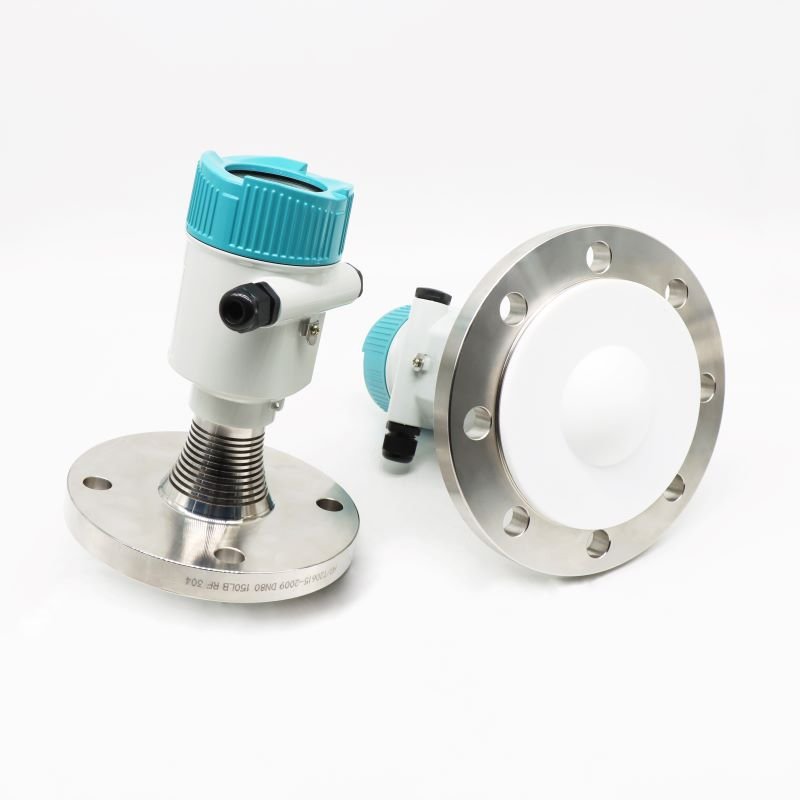Selecting the right solid-state radar level meter is a complex and meticulous process that takes into account a number of factors to ensure that the selected equipment can meet the actual needs and perform at its best. Here’s some detailed analysis and practical advice:
Define measurement requirements
- Measurement range: First, it is necessary to define the height range of the solid material that needs to be measured. Different types of radar level meters have different measuring ranges. It is important to ensure that the measuring range of the selected equipment can meet the actual application requirements, so as to avoid the situation of exceeding the measuring range during the measurement process and ensure the accuracy and stability of the measurement.
- Material type: Different types of solid materials have different reflection effects on radar waves, so it is necessary to choose the appropriate radar level meter according to the dielectric constant, density, particle size and other characteristics of the material. For example, the reflection effect of powder, block and particle on radar waves is different, and it is necessary to choose a radar level meter that can adapt to the characteristics of these materials.
Understand radar level meter types
- Pulse radars: Pulse radars are favored for their lower frequencies (such as 6.3GHz) and excellent performance. The influence of condensation, accumulation and other factors are fully considered in the design of antenna structure of this kind of radar, which makes it more reliable in practical application. For solid material measurement, pulse radar is a good choice.
- Frequency-modulated continuous Wave radar (FMCW) : FMCW radar provides more accurate measurements with higher frequency and resolution. However, its price is relatively high, and the requirements for installation and maintenance are also higher.
- Guided wave radar: Guided wave radar is a contact radar level meter, mainly suitable for the measurement of powder. Because its antenna can not effectively measure the bulk and particles, it is necessary to choose the appropriate antenna type (such as cable antenna) in use to avoid falling off and affecting the continuity of measurement.
Environmental considerations
- Electromagnetic interference: In industrial environments, electromagnetic interference is unavoidable. Therefore, in the selection of solid radar level timing, it is necessary to pay attention to its anti-interference ability. High quality radar level meter usually adopts advanced signal processing technology, which can effectively resist external interference and ensure the accuracy of measurement results.
- Installation environment: The installation position should be far away from the feed and discharge ports to avoid false signals reflected by the feed affecting the measurement results. At the same time, it is necessary to ensure that the radar antenna is perpendicular to the surface of the measured medium to reduce reflection and interference. In addition, it is also necessary to consider whether there are obstacles in the radar beam path and special environmental requirements such as explosion-proof areas.
Focus on performance indicators
- Accuracy: Accuracy is one of the important indicators to measure the performance of radar level meter. High frequency radar waves have a shorter wavelength, which provides higher measurement accuracy. Therefore, the high frequency radar level meter can be given priority when the measurement accuracy is required.
- Blind area: A blind area is an area that cannot be accurately measured by radar waves, usually near the radar antenna. When selecting the radar level timing, it is necessary to know the size of its blind spot and ensure that the highest level does not enter the measurement blind spot to avoid measurement errors.
- Beam Angle: The beam Angle determines the coverage and directivity of the radar system in space. The smaller the beam Angle, the more concentrated the coverage area of the radar system, the higher the measurement accuracy. Therefore, when selecting the radar level timing, it is possible to pay attention to its beam Angle size to evaluate its measurement accuracy and coverage.
Consider after-sales service and branding
- After-sales service: high-quality after-sales service can ensure that users get timely technical support and maintenance services in the process of use. Therefore, in the selection, you can give priority to provide good after-sales service manufacturers.
- Brand: Products of well-known brands are often more guaranteed in terms of technology, quality and performance. Choosing a well-known brand can reduce the risk and uncertainty in the use process.
To sum up, the selection of a suitable solid radar level meter requires comprehensive consideration of measurement needs, radar level meter type, environmental factors, performance indicators, after-sales service and brand. Through detailed analysis and practical suggestions, users can be helped to choose the most suitable radar level meter for their needs.
If you want to know more about the flow meter or flow meter selection, please consult the Aister flow meter manufacturer email: sales@aistermeter.com for help.

